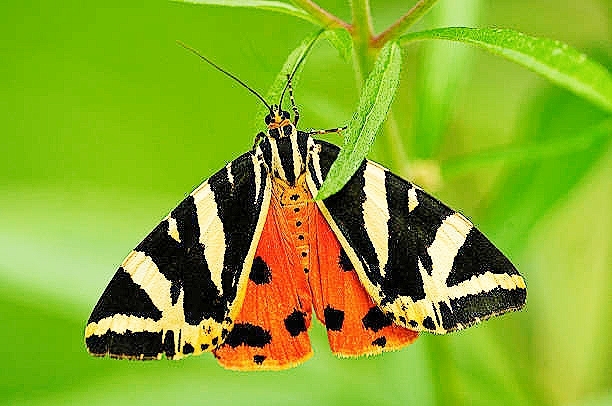ERROR : Server Busy(-1105)
ERROR : Server Busy(-1105)
Jersey tiger moth (Euplagia quadripunctaria)
Of the 2500 known moths in Great Britain and Ireland, one of the most recognizable is the Jersey tiger moth (Euplagia quadripunctaria). They belong to the genus Euplagia and family Erebidae, and are named for the distinctive markings on their wings, which resemble a tiger’s stripes. |

